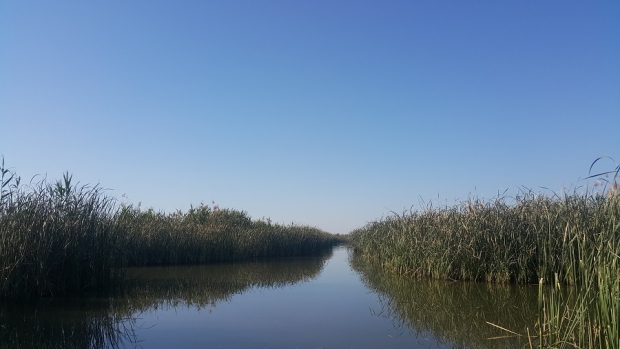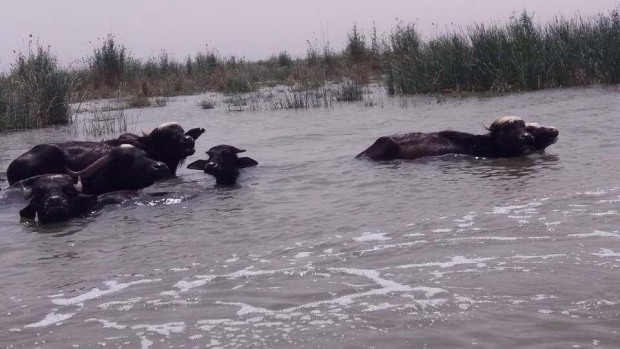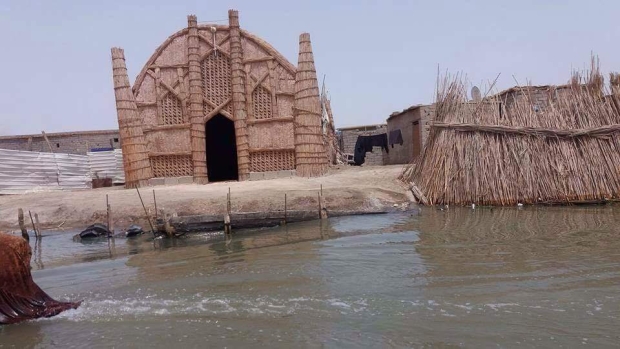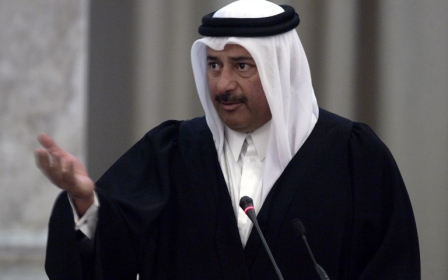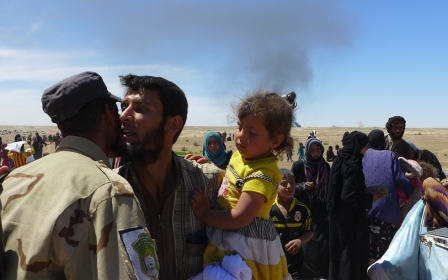Iraq reborn: Life returns to Hammar Marshes

HAMMAR MARSHES, Iraq - “These are our lands. Who would dare to come and work here without our permission?" said Sajad Hussein as he steered his small black wooden boat along a waterway between dense forests of reeds and papyrus plants that grow through the marshes in southern Iraq.
The 27-year-old, dressed in brown ragged sports clothes, is too young to remember the Hammar Marshes before they were drained by former Iraqi leader Saddam Hussein in the 1990s. After the Shia-led southern uprising against his rule in the aftermath of the first Gulf War, Saddam wanted to prevent rebels from using them as hide-outs.
Wetlands once full of life
One of the world's most important wetlands, the marshlands used to be a source of fresh water, and home to wide range of fish, rare birds, reptiles and animals. They once covered more than 22,000 square kilometres, but Saddam's campaign to flush out the marshes forced thousands of families to move elsewhere as their traditional livelihoods were destroyed.
'My family had to leave the marshes after we lost all our livestock due to the lack of water'
- Sajad Hussein, resident of Hammar Marshes
After Saddam was toppled from power in a 2003 US-led invasion, locals tore down the dams and canals built under his orders, allowing waters from the Tigris and Euphrates rivers to flow back to the marshes.
Other efforts to revive the marshes and ensure their protection have been under way, with the backing of local authorities, national and international NGOs. Yet so far, no more than 10,000 square kilometres have been submerged, local officials told Middle East Eye.
Last year, UNESCO listed Iraq's southern marshes, also known as al-Ahwar, as a world heritage site, describing them as "unique," and "one of the world's largest inland delta systems, in an extremely hot and arid environment". East and West Hammar are part of the four wetland marsh areas listed by UNESCO.
No more fish
Hussein and his family are among thousands of people who have returned to the area following Saddam's fall, hoping to resume their old way of life on the marshes. But since leaving school, Hussein said he had been jumping from one temporary job to another.
"I have worked as a fisherman for a while, but now there are not so many fish. For what we are earning, it’s a waste of time.”
The scarcity of fish has been caused by the high levels of salinity in the south and a drop in water levels in both the Tigris and Euphrates rivers, due to the proliferation of dams and irrigation schemes in Turkey and Syria. This also made the water undrinkable.
Last year, local authorities had to replenish fish stocks and introduce other organisms to sustain the aquatic life of the marshes, local officials and fishermen told MEE.
Tourist attraction
In lieu of fish, Hussein has turned to tourism in search of a steady income. Despite the ongoing government offensive to retrieve Mosul from Islamic State group militants and suicide bombings recently taking place in Baghdad, the southern provinces of Iraq - including Dhi Qar where the marshes lie - are considered safe and stable areas that have rarely witnessed attacks.
Visitors from the UK and US are also interested in the marshes. Last month, the US ambassador to Baghdad visited the marshlands with a group of US officials and investors.
'We are getting 25,000 to 30,000 dinars ($20-25) every tour. Sometimes the tourists are generous, sometimes they’re not'
- Dhafir Mohammed, boat owner
"Great visit to Iraqi marshes at Chibayish, Dhi Qar the #RealGreenZone has great potential for tourism," Douglas Silliman, the ambassador, said on his Twitter account on 9 April.
Lined up with another seven men on the bank, Hussein waits for a group of tourists mainly from Baghdad, offering trips around the marshes. They converted their wooden boats into water taxis of various sizes, which are powered by a petrol engine and furnished with old coloured carpets and cushions for comfort.
"We are getting 25,000 to 30,000 dinars ($20-25) every tour. Sometimes the tourists are generous, sometimes they’re not, but in general we are getting a good daily income," Dhafir Mohammed, a boat owner, told MEE. "Some days, we get more than 100,000 dinars (about $80)."
Taking a 30-minute tour with Hussein is to enter a tranquil world in which the water becomes a mirror of the perfect blue sky and the line between the two disappears on the horizon.
Several small islands covered by reeds and papyrus float here and there, one of them occupied by a family eating a simple lunch of grilled fish, bread and yoghurt.
Local investments
Yet despite the marshes’ ecological importance and UNESCO status, residents and local officials complain that investment in the area has been lacking.
"The government, until this moment, has not allocated any money to build even simple tourism facilities," said al-Khayoon. "So we set up our own plan [to attract] investments.”
'If they [the investors] want to invest here, they should pay us and pledge to provide opportunities for our people'
- Sajad Hussein, resident of Hammar Marshes
The proposed plan is being funded by Iraqi investors and is made up of more than 10 projects including a tourism village, playgrounds, cafes, restaurants, a river taxi service and a water park. Some have already been approved by the local government and contracted to Iraqi companies. According to Yahiya al-Nassiry, the governor of Dhi Qar province, the projects are expected to be complete within three years.
But the construction of these project has been met with opposition from some disgruntled residents.
"They [the investors] should sit with these tribes (which occupy the lands) to compensate them and provide jobs for their men," he added.
Nassiry told MEE that officials were aware of the challenges and ready to deal with them, adding that the local government had recently resolved similar complaints from another tribe.
'People here suffered a lot after the drainage of the marshes. They lost their money, their homes, their cattle and were forced to leave their lands. It's time to compensate them'
- Sheikh Hassan Sabri, leader of al-Hadadien tribe
"We either compensate the tribes by giving them land elsewhere to satisfy them, or ask them to be a part of the project, so they can benefit from it. If not, we will follow the legal direction," he explained. Most of these lands are legally owned by the government, but the tribes took control of them decades ago. They are either covered by water or lie on the bank of the marshes, with no inhabitants.
"People here suffered a lot after the drainage of the marshes. They lost their money, their homes, their cattle and were forced to leave their lands. It's time to compensate them," said Sheikh Sabri.
On his part, Hussein said that many of the residents welcomed outside investments and projects that would draw more tourists to the area, provided that the profits were reinvested in further developing their communities.
"If they [the investors] want to invest here, they should pay us and pledge to provide opportunities for our people," he said in a firm voice.
New MEE newsletter: Jerusalem Dispatch
Sign up to get the latest insights and analysis on Israel-Palestine, alongside Turkey Unpacked and other MEE newsletters
Middle East Eye delivers independent and unrivalled coverage and analysis of the Middle East, North Africa and beyond. To learn more about republishing this content and the associated fees, please fill out this form. More about MEE can be found here.



